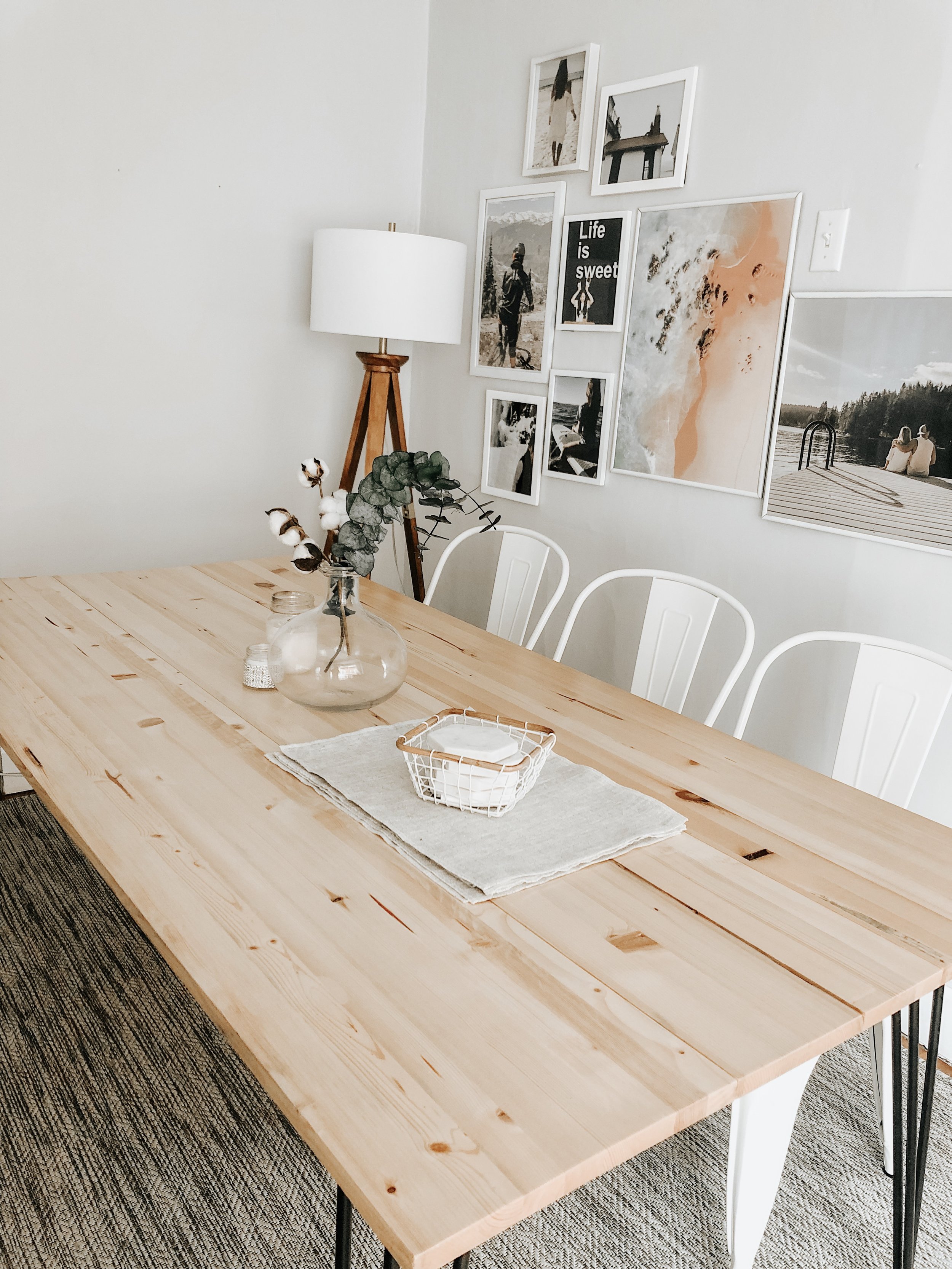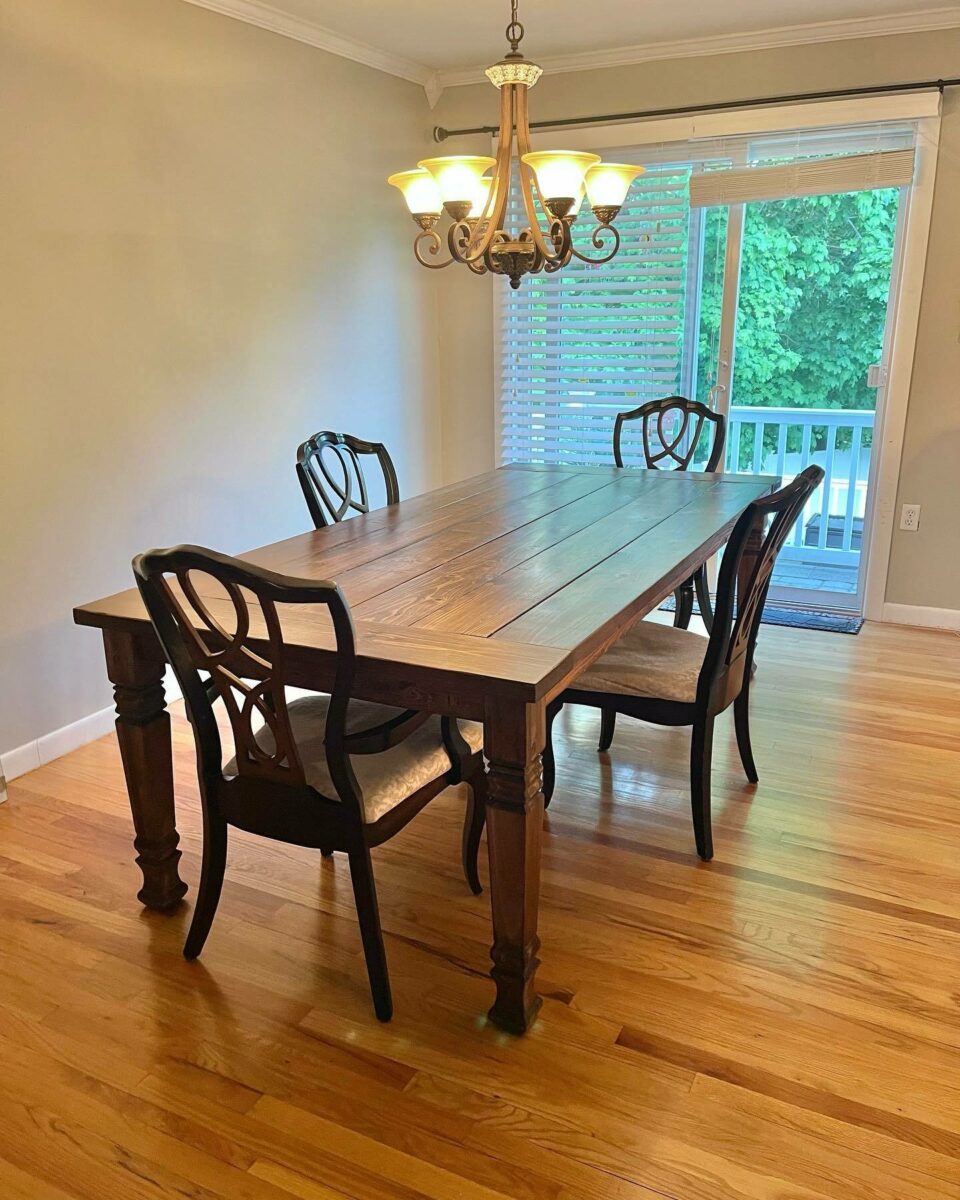Why Dining Room Table Legs Are Crucial for Your Table’s Stability
Why Dining Room Table Legs Are Crucial for Your Table’s Stability
Blog Article
How to Pick the Perfect Dining Area Table Legs for Your Home Decoration
Choosing the perfect eating area table legs is a nuanced process that needs mindful factor to consider of different components, including your space restrictions, visual choices, and practical requirements. The interplay between dimensions, styles, and materials can substantially affect the setting of your dining location, making it vital to approach this choice systematically. As you ponder the myriad choices offered, it comes to be clear that the appropriate selection expands past plain appearance; it can improve your general dining experience. What elements should you prioritize to ensure your selection complements your home's unique personality?
Assess Your Dining Room
Assessing your eating room is important for choosing the right table legs that complement both appearances and performance. Begin by gauging the dimensions of your eating area, consisting of ceiling elevation, floor area, and closeness to other furnishings. This info will certainly assist determine the appropriate dimension and height of your dining table, which straight influences the option of table legs.
Following, take into consideration the style and layout of your dining space. For example, an open-concept layout may benefit from table legs that offer aesthetic lightness, such as slender steel or acrylic choices. On the other hand, a more conventional setup could call for strong wood legs that offer a feeling of durability.
Review the existing shade combination and materials in your eating location. Balancing the table legs with these elements produces a cohesive look that boosts the total decor.
Eventually, a complete assessment of your dining space will certainly lead you in making a notified choice, making certain that your table legs not just improve the visual charm but also serve useful purposes.
Consider Your Design Preferences
When picking eating space table legs, it is vital to assess your individual design choices, as they dramatically affect the general aesthetic of your dining room. Your option of table legs can either complement or comparison with existing decor, making it crucial to align them with your recommended indoor design motif.
If your home leans in the direction of a contemporary visual, take into consideration smooth metal or minimal wooden legs that give a tidy, clean look. For a much more conventional approach, luxuriant wooden legs with intricate makings can include a touch of beauty and sophistication. Industrial designs gain from durable, raw materials such as reclaimed wood and steel mixes, showing a tough appeal.
In addition, farmhouse and rustic designs commonly favor tough, chunky legs that stimulate a feeling of warmth and comfort. Conversely, if your design is eclectic, you may choose unconventional shapes or a mix of products to create aesthetic interest.

Evaluate Product Options
The choice of material for dining area table legs plays a pivotal role in both longevity and aesthetic charm. Typical products consist of timber, steel, and composite options, each offering unique attributes that can affect the overall look and longevity of your table.
Wood is a traditional option, recognized for its heat and flexibility. Hardwoods like oak and walnut give extraordinary toughness and can be finished in various stains to match any type of design. Nevertheless, softwoods like want are extra prone to dents and scratches, making them much less ideal for high-traffic areas.
Metal legs, usually crafted from steel or light weight aluminum, exude modernity and commercial beauty. They are extremely long lasting and immune to use, making them appropriate for families with children or constant celebrations (dining room table legs). In addition, metal can be finished in various shades, improving the personalization possibilities
Composite products, such as MDF or laminate, deal cost and diverse layouts. While normally less durable than strong timber or metal, they can still provide a fashionable appearance and are frequently very easy to preserve.
Ultimately, the product you select must align with your way of living, aesthetic preferences, and the level of usage your table will experience.
Determine Elevation and Size
Picking the proper elevation and dimension for your dining room table is essential for both performance and convenience. The conventional height for eating tables generally varies from 28 to 30 inches, enabling enough legroom for a lot of individuals when seated. Nonetheless, it is important to consider the dimensions of your eating space and the sorts of chairs you plan to utilize.

Furthermore, consider the percentages of your eating area. A bigger table in a spacious area can create a grand atmosphere, while a smaller table works well in more intimate settings. Eventually, the ideal elevation and dimension will certainly integrate with your total design and improve the eating experience for you and your visitors.
Explore Modification Opportunities

Furthermore, the style of the legs can be customized to fit different styles, such as rustic, modern-day, or commercial. Conical legs can evoke a mid-century modern feeling, while chunky, block-style legs may reverberate with standard or farmhouse design.
Homeowners can additionally check out shade surfaces, from natural timber discolorations hop over to these guys to paint, enabling them to match or comparison with the table top and surrounding style.
Additionally, leg height can be adapted to fit particular seating arrangements or individual preferences, boosting both comfort and capability.
Finally, unique decorations, such as makings or decorative braces, can even more individualize the table legs, making the dining experience not simply a statement however a meal item in the home. By thinking about these modification options, home owners can create a dining-room table that really shows their uniqueness.
Verdict
Choosing the optimal dining-room table legs needs mindful factor to consider of various aspects, including the measurements of the eating space, style choices, product resilience, and preferred elevation. Customization options even more boost the capacity to achieve a cohesive aesthetic that matches the general style. By methodically examining these components, homeowners can guarantee that the selected table legs not only meet useful needs yet additionally add favorably to the dining experience and atmosphere of the home.
Choosing the suitable eating area table legs is a nuanced procedure that calls for mindful factor to consider of different components, including your area restraints, read what he said aesthetic choices, and functional requirements.Examining your dining room is crucial for selecting the right table legs that match both visual appeals and functionality.When determining size, gauge the location where the table will certainly be put to ensure it fits conveniently, enabling for at least 36 inches of clearance around the table for easy movement. A bigger table in a sizable location can create a grand ambiance, while a smaller sized table functions well in more intimate setups.Choosing the optimal dining room table legs calls for cautious consideration of various variables, including the measurements of the eating area, style choices, material resilience, and wanted elevation.
Report this page